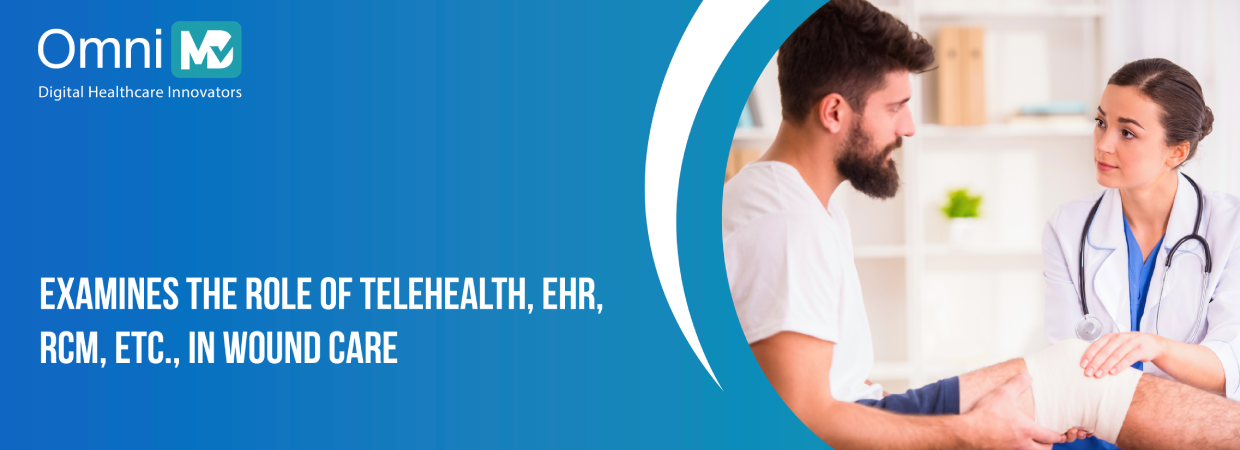Highly Recommended Strategies by Our Experts to Boost Patient Engagement in Wound Care
Chronic wounds now affect more than 10.5 million Medicare beneficiaries in the U.S. Means nearly 2.5% of the population lives with wounds that often don’t heal easily and lead to a physical and financial burden.
As the crisis continues to grow, it triggers an urgent need for a more thoughtful, unified approach to wound care, and at the heart of this lies:
- Advanced clinical interventions
- Thorough wound assessment and documentation
- Collaborative, interdisciplinary care
- And perhaps most importantly, engaged, empowered patients
While there have been reports and instances of hospitals investing heavily in the latest clinical interventions like hyperbaric oxygen therapy, bioengineered skin substitutes, and image-based assessment tools, one crucial element that still seems to lag behind is patient engagement. The numbers highlight that:
- Up to 60% of diabetic foot ulcers recur within three years, largely due to poor self-care adherence.
- A 2024 study found that non-adherence to compression therapy plays a critical role in turning venous ulcers into chronic ones.
- Only 40% of patients clearly understand their wound care plan after discharge.
With an aim to explore what truly motivates patients to stay engaged in their wound care journeys, from practical, evidence-based strategies to ground-breaking technologies, this blog covers expert-recommended plans of action that actually boost patient engagement. Let’s begin.
How Patient Engagement Strategies Differ for Acute and Chronic Wounds
In modern healthcare, acute wound management is usually straightforward and episodic; chronic wound care, on the other hand, demands an integrated approach involving medical science, behavioral psychology, health informatics, and socioeconomic context.
For acute wounds, patient engagement tends to be transactional. That means the patient suffers a minor injury, seeks care, follows brief instructions, and heals within a predictable timeline. It’s a discrete interaction focused on localized tissue repair. The outcome is binary, either the wound heals or it doesn’t, and in most cases, it does, with minimal intervention and oversight.
Chronic wounds, such as diabetic foot ulcers, venous leg ulcers, or pressure injuries, are complex reflections of systemic dysfunction. Healing these wounds requires a model of engagement that goes beyond clinical intervention. This begins with a shift in how we view the wound.
For example, a diabetic foot ulcer may seem like a simple skin breach, but in reality, it’s a symptom of uncontrolled blood glucose, peripheral neuropathy, compromised vasculature, poor footwear habits, low health literacy, and often socioeconomic instability.
In these cases, patients must be empowered to adopt long-term behavioral changes, such as consistent foot inspections, glycemic control, nutritional adjustments, and mobility improvements.
Clinicians, meanwhile, are required to shift from the role of proceduralist to educator, navigator, and coordinator, engaging both patients and a multidisciplinary care team that may include endocrinologists, vascular surgeons, dietitians, podiatrists, and social workers. Navigating this shift becomes much smoother with technology by your side. Let’s see how.
Disruptive Technologies and Their Roles in Boosting Patient Engagement in Wound Care
Just as every wound type, as mentioned, requires a personalized approach to diagnosis and care, various technologies play specific clinical roles and tackle distinct obstacles in patient engagement throughout the wound care continuum. Below, we explore some of the top wound care IT solutions strategically changing how patients engage within the broader care ecosystem.
EHRs Enabling Feedback-Driven Wound Recovery
Equipped with detailed charting, image sharing, educational templates, and communication tools, EHRs create a feedback loop that reinforces patient engagement in the most unprecedented way.
For instance, the wound-specific charting modules of EHRs allow providers to capture standardized data on a patient’s wound status. It includes metrics such as wound size and depth, tissue type, the presence and quantity of exudate, and the stage of healing. This data, when integrated with a patient portal, fills the information gap between patients and providers.
In action, a patient recovering from a pressure ulcer might receive visual updates through the portal that show improvement in wound bed tissue and reduced exudate over a few weeks, providing assurance and serving as motivation for adherence to treatment regimens.
In case healing is stagnant, patients can be prompted to regulate their behaviors, perhaps by improving offloading compliance or enhancing wound site hygiene.
Revenue Cycle Management (RCM) Elevating Financial Clarity
We know that wound care is not typically achieved on a single visit. It can take weeks or even months of regular follow-up, frequent dressing changes, and the application of expensive biological materials. If patients don’t know what to expect financially, they are more likely to skip visits, refuse recommended therapies, or abandon care altogether.
RCM eliminates this financial mystery by providing a clear and comprehensive breakdown of out-of-pocket expenses. Further, it supports provider-side engagement by lessening administrative burdens that would otherwise detract them from quality patient interactions. One of the most significant ways it does so is through real-time insurance eligibility verification and flagging discrepancies (if any).
Lab Intelligence Turning Data into Wound Care
Timely and accurate information about biological markers, such as wound culture results, C-reactive protein (CRP) levels, and hemoglobin A1c (HbA1c), is critical for guiding clinical decisions in wound care. Lab management software supports this by automating the tracking of biological markers and proactively notifying both patients and providers of key changes.
Another equally important aspect lab management software supports is medical awareness. Many patients struggle to interpret the clinical significance of their abstract lab values. Lab management platforms bridge this gap by translating complex data into intuitive, patient-friendly formats, using charts, color-coded indicators, and plain-language summaries like ‘Your CRP levels have decreased, suggesting inflammation is reducing,’ helping patients co-relate their medication adherence and healing outcomes.
Telehealth Bringing the Remote Art of Wound Healing
In the context of wound care, the most advantageous uses of telehealth are seen in the supervision of dressing changes through live videos. Many patients and caregivers are overwhelmed by the complexity of intricate dressing or negative pressure wound therapy. With telehealth, a nurse or wound specialist can supervise the process remotely, guiding the patient or caregiver step-by-step. This hands-on coaching minimizes dressing errors, lessen the risk of infection, and profoundly boosts caregiver confidence.
The technology also excels in identifying and addressing healing barriers. A wound that appears non-healing despite appropriate dressings may signal deeper behavioral or systemic issues. In a tele-visit, the provider can delve into factors such as patient mobility, hygiene routines, smoking habits, or improper use of offloading devices. Take, for instance, a patient with a pressure injury that isn’t improving. During the televisit, the clinician discovers the patient, although using a cushion, has not been repositioning regularly due to work demands. The clinician suggests smartphone reminders and discusses ways to incorporate repositioning into the patient’s work schedule, opening doors to better healing and care outcomes.
Final Thoughts: How to Know if Patient Engagement is Really Making a Difference?
Given the many intertwined factors that influence wound healing, isolating the true impact of patient engagement can seem challenging. With so many moving parts, it’s easy to feel unsure about which changes actually stem from more active patient involvement.
Still, one of the most reliable and revealing ways to gauge its effectiveness lies in day-to-day interactions with patients. Look closely at how well they grasp their condition, the care it requires, and the progress they’re making. If you find patients having this level of understanding, then it’s a sign that engagement is translating into real, measurable outcomes.
Over time, you’ll also begin to notice how care protocols evolve and elevate when patient engagement becomes a consistent part of the process. That said, by fostering deeper involvement from patients, you will be simplifying care, reducing friction points like miscommunication, confusion, and unrealistic expectations, barriers that often stall healing.

Boost Healing with Smarter Patient Engagement
Proven strategies to keep your wound care patients informed and involved

 Written by Neha Singh
Written by Neha Singh
 Reviewed by Shivani Joshi
Reviewed by Shivani Joshi